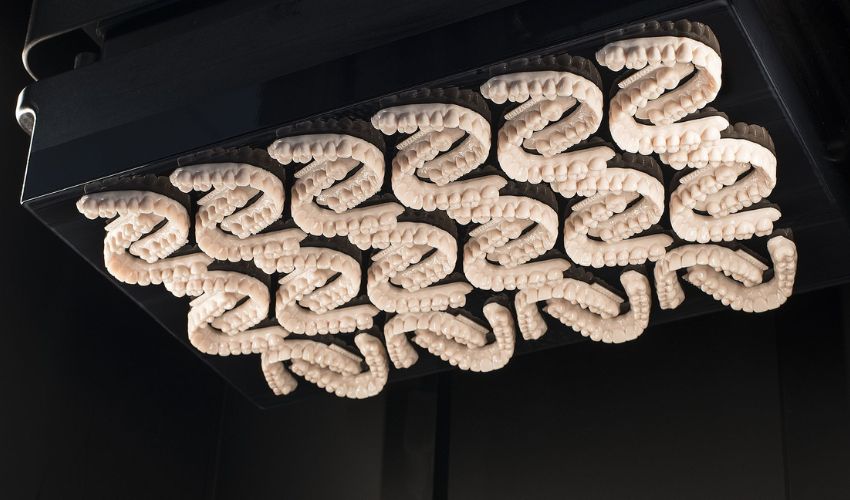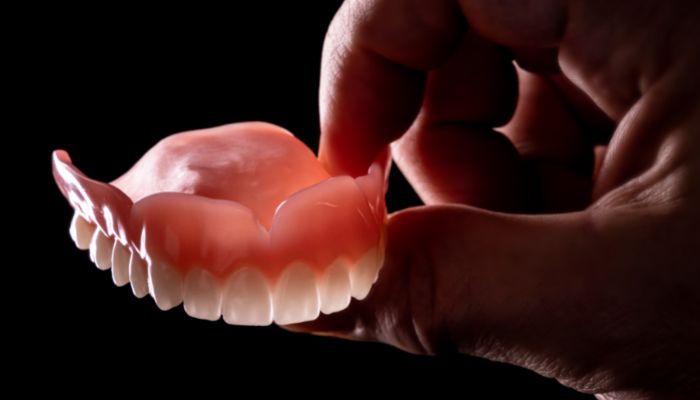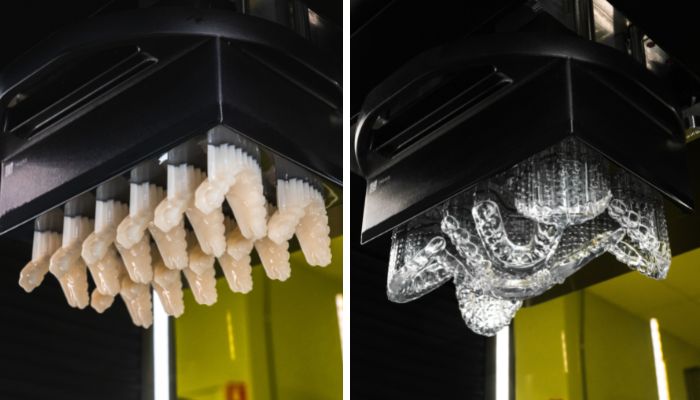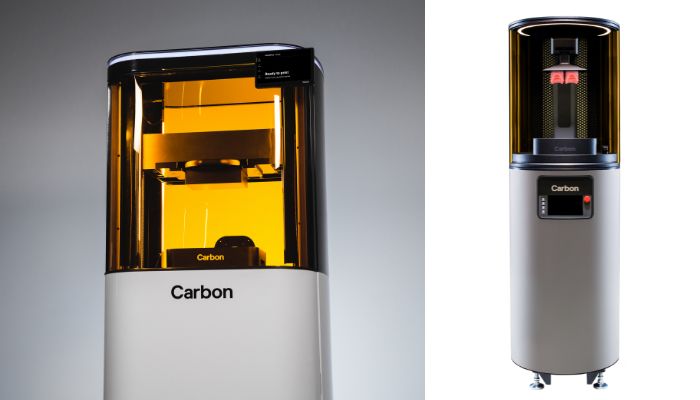Dental Labs are Overcoming Challenges Thanks to Additive Manufacturing

For some time now, it has been clear that the dental laboratory business has experienced a notable shift, with even more change yet to come. Valued at $31.13B according to a report from Future Market Insights, it is expected to grow rapidly in the coming years, not the least because of a rapidly aging population. Currently, the growth of the U.S. population aged 65 years or older exceeds that of the total population as well as that of the population under 65 due to lower birth rates and increased longevity in the United States and around the world. This, of course, is expected to drive demand for various dental products, such as dentures, in the coming years. However, before dental labs will be able to truly take advantage of this opportunity, there are a number of challenges that they must first address, which they can do through the adoption of additive manufacturing.
Dental labs are facing obstacles to growth not just on the market level but also on a smaller scale. In terms of industry, there are two major trends they must address. The first is the increase in competition as a result of increased lab consolidation at a time when the market is expected to grow rapidly after several years of decline. To benefit from the growth of the industry and rise above other labs, it is necessary for dental labs to find a way to become competitive in a saturated market.

3D printed dentures like the one pictured can be customized for the patient and made more quickly than many traditional methods
Another trend is a lack of skilled labor in the dental industry. According to the United States Bureau of Labor Statistics, between 2007 and 2017, there was a 20% decrease in the number of dental technicians in the US, dropping from 44,530 to 35,630. And this trend has only increased, especially after the COVID-19 pandemic. This of course means fewer people able to work on dental products, meaning an automated, hands-off digital process is increasingly necessary.
Beyond the larger trends, dental labs also face a number of day-to-day challenges. Growing costs and the need for highly efficient manufacturing processes capable of producing accurate and quality parts are just a few of the issues that dental labs are seeking to address. Turning to a digital workflow and additive manufacturing, especially through Carbon’s solutions, is helping dental labs to not just overcome these issues but also allows them to remain more competitive in a market that is forecasted for rapid growth.
How Can Additive Manufacturing Help to Address Challenges Facing Dental Labs?
Seeing what they are facing, it perhaps already is understandable why a dental lab wishing to remain competitive would turn to additive manufacturing. And certainly there are many reasons that digital dentistry is gaining in popularity. When it comes to consolidation of labs and a lack of skilled labor, the use of 3D printers can allow labs to create perfectly customized, quality products in a fraction of the time and with less workers. Moreover, adopting new technologies like AM can help them gain an edge on their competitors. By using 3D printing, labs are able to produce parts with speed, quality, accuracy, and aesthetics that rival those made using traditional methods.
Carbon’s 3D printing solutions have proved to be popular among many dental labs hoping to take advantage of the opportunities of this new shift in dentistry. The company is known for its innovative Digital Light Synthesis™️ (DLS) technology, a resin-based 3D printing process that uses digital light projection and oxygen-permeable optics, yielding a process that is both ultra-fast and precise. Indeed, a 2021 Valmont Research study even found that Carbon printers were declared Most Reliable among other honors. Furthermore, Carbon printers were especially chosen by those involved in implant dentistry, for whom accuracy was the most valued.
One respondent, Ramon Alsua of Unident Lab, commented, “I can’t stress enough the importance of consistency and accuracy of models. With the Unident Lab’s specialty being implants, with the tiny components that are used in implant dentistry, we need to be extremely accurate. In the past, this has always been a big challenge. Carbon 3D printers have been a game-changer for us. I am confident that the models that are produced will be right the first time. I know the parts the lab sends to the dentist will be accurate.”
And it is easy to see why. Carbon’s Digital Manufacturing Platform boasts a number of benefits for dental labs hoping to economically produce parts at scale. These include a broad portfolio of resins from industry-leading manufacturers, network connectivity enabling remote monitoring and troubleshooting, knowledgeable support teams, and accuracy validated by Boston University. The platform is an ideal choice for mid- to high-volume production, and Carbon’s subscription model makes it seamless for labs to always have the right printer for their needs, with the most up-to-date technology. Every subscription also includes concierge level support to help labs make the most of their 3D printing investment. For these reasons, a number of dental labs have turned to Carbon for their digital dentistry needs.
Carbon’s Solutions are Enabling Users to Solve Issues Preventing Growth
One such dental lab is Ziemek Laboratories. Based in Olympia, Washington, Ziemek is a full-service lab which has fully converted to digital dentistry, specializing in crowns, implants, removable products and more. Through Carbon, they hope to continue a legacy of adopting new technologies in order to ensure excellent service and high-quality products for their customer dentists. And indeed, through the use of Carbon’s M Series printers, they have been able to address their three biggest challenges: inconsistency, unpredictable cost structure, and increasing dental model production costs.
Ziemek found that through Carbon’s solutions, the cost to make models has been reduced at least 12.5% and up to 27.5% from a previous model production solution. Additionally, they have seen higher throughput due to an increased speed of production, cutting production turnaround time by up to 40%. This success has been seen as well through many other Carbon customers, such as Derby Dental Lab who was able to increase their model production by 60% with Carbon. These success stories show not just why many dental labs have turned to additive manufacturing, but why Carbon’s technology is well suited for the dental market. You can find out more about Carbon’s offerings for dentistry HERE.
Do you think additive manufacturing will help dental labs to face the increasing challenges they face in a rapidly evolving market? Would you be interested in adopting Carbon’s solution for dentistry? Let us know in a comment below or on our LinkedIn, Facebook, and Twitter pages! Don’t forget to sign up for our free weekly Newsletter here, the latest 3D printing news straight to your inbox! You can also find all our videos on our YouTube channel.
*All Photo Credits: Carbon








